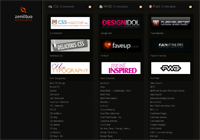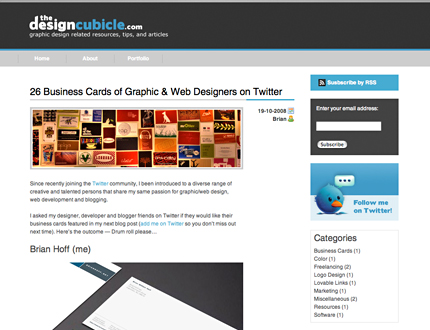
Photo by Melisande*
Introduction
The secret is that you don’t have to hire an expensive blog designer to have a great blog redesign. While it certainly helps and makes the process much easier if you had one to work with, it would still be your responsibility in order to set the overall guidelines for the blog redesign. You need to have a direction when working towards a redesign of your blog. Without any direction you will just end up with a prettier blog (hopefully), which is fun, but does not guarantee that it will make your blog any better.
A great blog redesign starts with a plan. In order to put together a plan for your redesign, you must first reassess your goals, then figure out how well your blog is meeting your goals, and finally asking yourself whether the current design is helping your blog achieve your goals.
Let your goals guide your redesign
If you have ever tried to redesign your blog or anything for that matter, you have probably found your progress halted to a stop by little details such as does this blue or that green look better? This happens when you don’t have goals to guide your overall efforts. Little details will bog you down and slow your progress and even sidetrack you completely from the actual purpose of your redesign. The importance of the answer to whether that blue or green looks better pales in comparison to the answer for the question of whether this change will help you make more money, get more subscribers, or increase page views.
Making visual changes just for the sake of change itself will result in a prettier blog, but that does not necessarily mean a better blog. You can actually make it worst if your redesign is not built with your goals in mind. You can’t hit a target you cannot see.
Just like social media and SEO, your blog design is a tool, a means to an end and not the end in itself. Reassess your goals and allow them to guide your decisions when redesigning your blog. The following are some great resources to help you get started on figuring out your goals and reassessing your current ones:
List of resources
- The Pocket-sized Guide to Blogging
- How to Make Money Blogging: 7 Strategies to Make Money Online
- Why Do We Blog?
How well is your blog meeting your goals?
This is not about whether or not your current blog design is helping you achieve your goals, because that is the next step. This is about whether or not your current blog is where you want it to be. Is it giving you the exposure that you want? Is it getting you more clients and leads? Are you building a bigger network in which to spread your ideas around?
The answers to these questions will help you determine the goals for your blog redesign. This is different from the goals for your blog as this focuses solely on what you want the blog redesign to be able to accomplish in the end as a result of the blog redesign and nothing else. Increase page views? Get more subscribers? Decrease bounce rate? Increase discussions? Get more leads/clients?
List of resources
- How Can You Measure the Success of Your Blog?
- Social Media Marketing: Numbers Can’t Tell the Whole Story
Is your blog design helping you achieve your goals?
In order to figure out whether your blog design is helping you or not, you must really take a second look at your blog design. After that, take another 3-4 looks, seriously. As humans our brains are programmed in such a way that information that doesn’t change much, often just gets ignored completely by our mind even if we see them everyday. This is why we can do something everyday and not notice something until someone points it out to us or for some reason we were forced to pay attention to it. So when was the last time you really took a look at the design of your sidebar, footer, headlines, or comments?
If you are like most people, it was probably a long time ago. And who can blame you, as bloggers we get caught up with writing the next best article, promoting the crap out of it in social media outlets, and figuring out other methods to achieve our goals that we end up overlooking our own blog design. We no longer see the widgets we stuffed into the sidebar at the last minute, the links that no one ever clicks on in the footer, or that hideous rss button in the corner. Everything becomes a blur and your blog design suffers because it certainly doesn’t get better on its own.
So how do you figure out whether or not a blog design is helping you achieve your goals? It is pretty simple, as you go through your blog design keep in mind that any visual element that is not helping you achieve your goals is hurting it.
Conclusion
In the end, you should have a much better plan and direction for your blog redesign. Whether you take this to a blog designer or do it yourself does not matter as the end blog redesign will be that much better now that you invested time into a solid plan. If you are doing it yourself, then the next article is for you. It will focus on how to approach the redesign process after you got a plan.
Hire me!
Related posts:
- The Secret of Great Blog Designs What is the purpose of a blog design? There are…
- 47 Must See Great Blog Designs This is a snippet of what is inside the blog…
- 10 Reasons Why Your Blog Design Will Never Be Done “You are either progressing or regressing. There is no…








































































































